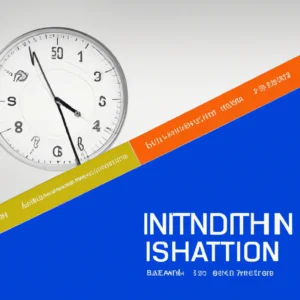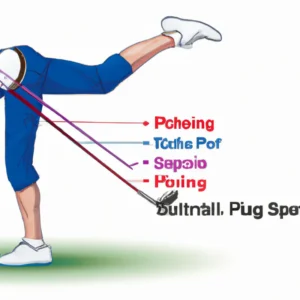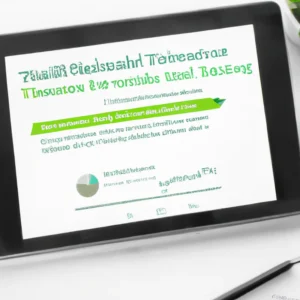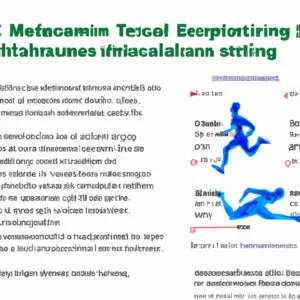**”Exploring the Benefits of High-Intensity Interval Training (HIIT) for Mental Health: How Short Bursts of Exercise Can Enhance Mood and Reduce Stress”**
Exploring the Benefits of High-Intensity Interval Training (HIIT) for Mental Health: How Short Bursts of Exercise Can Enhance Mood and Reduce Stress
In today’s fast-paced world, mental health has become a focal point for many individuals. With increasing levels of stress, anxiety, and depression, people are searching for effective solutions to improve their well-being. One such solution lies in High-Intensity Interval Training (HIIT), a workout regimen that has gained immense popularity not only for physical fitness but also for its mental health benefits. In this blog post, we will explore how short bursts of intense exercise can enhance mood and reduce stress.
What is HIIT?
High-Intensity Interval Training (HIIT) is a form of exercise that alternates short, intense bursts of activity with periods of low-intensity exercise or rest. Typically, a HIIT session can last anywhere from 15 to 30 minutes, making it a time-efficient workout option. Unlike traditional workouts that may take an hour or more, HIIT can deliver similar—or even better—results in a fraction of the time. Moreover, its versatility allows individuals to customize their routines based on fitness levels, preferences, and goals.
The Science Behind HIIT and Mental Health
Research has shown that physical activity, in general, is beneficial for mental health. However, HIIT has unique advantages that set it apart. During HIIT workouts, the body releases endorphins, often referred to as “feel-good” hormones. Consequently, this natural chemical boost can lead to improved mood and reduced feelings of anxiety.
Furthermore, studies indicate that HIIT can lead to greater decreases in cortisol levels—the hormone associated with stress—compared to moderate-intensity workouts. Therefore, incorporating HIIT into your routine could be an effective strategy for managing stress levels.
Health Benefits of HIIT
Enhanced Mood and Reduced Stress
HIIT not only promotes physical fitness but also has a profound impact on mental well-being. As mentioned, the release of endorphins during high-intensity workouts can enhance mood. More importantly, research indicates that individuals who engage in regular exercise, particularly HIIT, report lower levels of anxiety and depression. This is particularly relevant in today’s world, where mental health issues are increasingly prevalent.
Improved Cognitive Function
In addition to mood enhancement, HIIT may support cognitive function. Studies suggest that physical activity increases blood flow to the brain, which can improve memory, concentration, and overall brain health. Therefore, by incorporating HIIT into your routine, you may not only feel better emotionally but also think more clearly and effectively.
Increased Resilience and Coping Mechanisms
Moreover, participating in HIIT can build resilience, a crucial factor in managing stress. The demanding nature of HIIT requires individuals to push their limits, which can translate into improved coping mechanisms in everyday life. When faced with stressors outside the gym, those who regularly engage in challenging workouts may feel better equipped to handle pressure.
Nutrition Tips for Maximizing HIIT Benefits
While exercise is crucial, nutrition also plays a vital role in optimizing mental health. Here are some nutrition tips to complement your HIIT routine:
Focus on Whole Foods
Incorporating whole foods into your diet can enhance your overall well-being. Foods rich in omega-3 fatty acids, such as salmon and walnuts, have been shown to improve mood. Similarly, consuming fruits and vegetables packed with vitamins and minerals can support brain function.
Stay Hydrated
Staying hydrated is essential, especially when engaging in high-intensity workouts. Dehydration can lead to fatigue and mood swings, undermining the benefits of your HIIT sessions. Therefore, make sure to drink plenty of water before, during, and after your workouts.
Fuel Before and After Workouts
Eating a balanced meal or snack before and after your HIIT sessions can help maintain energy levels and support recovery. Complex carbohydrates and protein are excellent choices for pre- and post-workout nutrition, as they provide sustained energy and aid muscle repair.
Exercise Advice for Effective HIIT
When starting a HIIT routine, consider the following tips for maximum effectiveness:
Start Slow and Progress Gradually
If you are new to HIIT, begin with shorter intervals and gradually increase the intensity. This approach allows your body to adapt, reducing the risk of injury. For instance, start with 20 seconds of intense effort followed by 40 seconds of rest, and over time, adjust the work-to-rest ratio.
Mix Up Your Workouts
To keep things interesting and challenge your body, vary your HIIT workouts. Incorporate different exercises like sprinting, cycling, or bodyweight movements. This not only helps prevent boredom but also engages different muscle groups, leading to better overall results.
Listen to Your Body
Finally, always pay attention to how your body feels during and after workouts. If you experience pain or excessive fatigue, it may be a sign to scale back or modify your routine. Your mental health is just as important as your physical fitness, so prioritize self-care.
Conclusion
In conclusion, High-Intensity Interval Training offers a multitude of benefits for mental health. From enhancing mood and reducing stress to improving cognitive function and resilience, the advantages of HIIT extend far beyond physical fitness. By incorporating proper nutrition and exercise advice, you can maximize these benefits and foster a healthier, happier lifestyle. Therefore, whether you are looking to boost your mood or manage stress, consider giving HIIT a try—it may just be the mental health boost you need.
FAQ
What is High-Intensity Interval Training (HIIT)?
High-Intensity Interval Training (HIIT) is a workout regimen that alternates short, intense bursts of activity with periods of low-intensity exercise or rest. Typically lasting 15 to 30 minutes, HIIT is a time-efficient workout option that provides similar or superior results compared to traditional workouts that take longer. Its versatility allows individuals to tailor their routines based on personal fitness levels and goals.
How does HIIT improve mental health?
HIIT can enhance mental health by promoting the release of endorphins, which are hormones that boost mood and reduce feelings of anxiety. Additionally, research shows that HIIT may lead to greater decreases in cortisol levels, the hormone associated with stress, compared to moderate-intensity workouts. Regular engagement in HIIT can therefore help manage stress levels and improve overall emotional well-being.
What nutritional strategies can support my HIIT routine?
To maximize the benefits of HIIT, focus on incorporating whole foods rich in omega-3 fatty acids, fruits, and vegetables into your diet, as these can enhance mood and brain function. Staying hydrated is crucial, especially during high-intensity workouts, to prevent fatigue and mood swings. Additionally, consuming a balanced meal or snack with complex carbohydrates and protein before and after workouts can help maintain energy levels and support















Post Comment